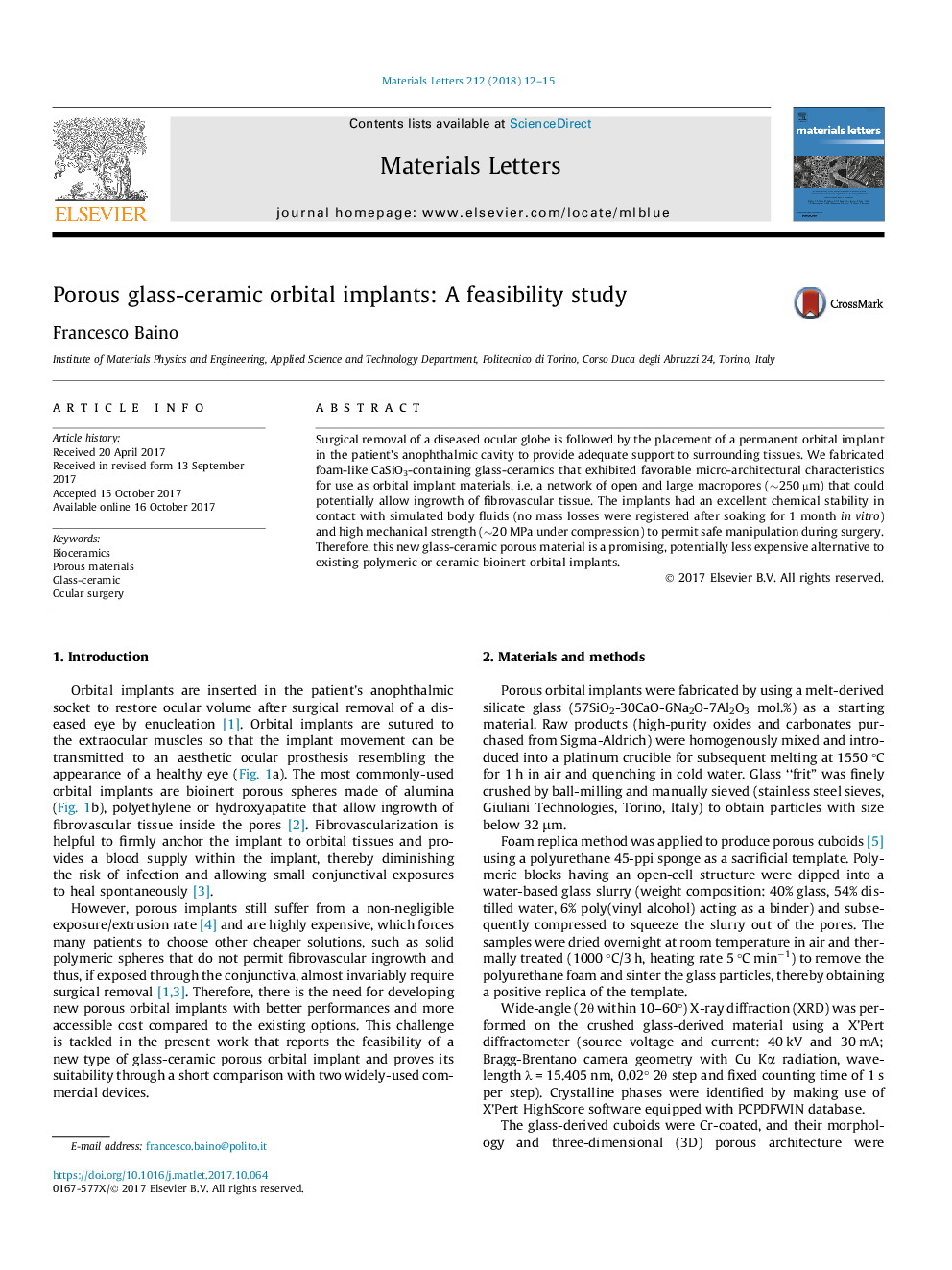| Article ID | Journal | Published Year | Pages | File Type |
|---|---|---|---|---|
| 8015506 | Materials Letters | 2018 | 4 Pages |
Abstract
Surgical removal of a diseased ocular globe is followed by the placement of a permanent orbital implant in the patient's anophthalmic cavity to provide adequate support to surrounding tissues. We fabricated foam-like CaSiO3-containing glass-ceramics that exhibited favorable micro-architectural characteristics for use as orbital implant materials, i.e. a network of open and large macropores (â¼250â¯Âµm) that could potentially allow ingrowth of fibrovascular tissue. The implants had an excellent chemical stability in contact with simulated body fluids (no mass losses were registered after soaking for 1 month in vitro) and high mechanical strength (â¼20â¯MPa under compression) to permit safe manipulation during surgery. Therefore, this new glass-ceramic porous material is a promising, potentially less expensive alternative to existing polymeric or ceramic bioinert orbital implants.
Related Topics
Physical Sciences and Engineering
Materials Science
Nanotechnology
Authors
Francesco Baino,
